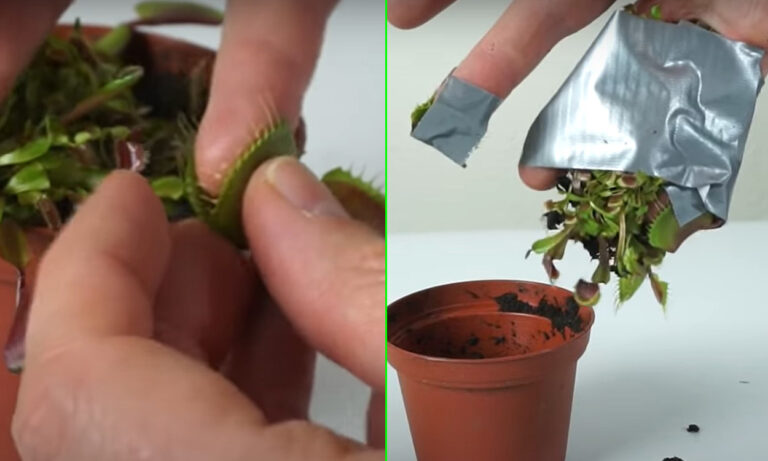Man lets a Venus flytrap digest his finger for an entire day in bizarre experiment
We’ve all had fleeting ‘what if’ moments at least once in our lives: What if I drop my phone from a bridge? What if I walk with a spoon in my mouth in public? What if I flush an entire tissue roll down an aircraft lavatory? Though most of us shake the feeling off by getting a grip on reality, there are some creators on the internet who are dedicated to answering these questions for the rest of the world to witness and ease their thoughts.
One such YouTuber is James, who runs The Action Lab channel on the platform. To date, the chemical engineer has frozen his finger in crystal clear ice, boiled water by heating it with his hands and even put his arm in a vacuum chamber to see if it explodes.
But in a video that has since gone viral, James documented the results of a scientific question humanity has toyed around with ever since we learned about the Venus flytrap in our biology classes: What happens if we stick our fingers into the marvellous plant? Is it capable of digesting human flesh like a true cannibal?
“The Venus flytraps have always intrigued me ever since I was little and I was always a little scared to touch the inside because I was scared it would bite me like an animal,” James said in the video as he first stimulated the plant into thinking that his finger was “real food.”
“I’m going to stimulate the inside hairs and it’ll close down on my finger and then you have to squeeze it around 30 to 40 times to stimulate a bug trying to escape. This starts the enzymatic juice flowing in there that will… digest whatever is inside.” James then inserted a bee to kickstart the said process and later substituted his pinky finger as the subject.

“I can actually feel pressure on it,” he explained when the flytrap successfully bit his finger and he duct taped the entire plant onto his hand and went on to perform daily tasks. The creator also taped a second finger with just the kidney-shaped part of the plant cut from its stem which already had its juices flowing after digesting its last prey.
Three hours into the experiment, James updated his audience by admitting how he was starting to feel a bit of sensation in the second finger the plant had closed its lobes around. “Sometimes, I feel like it’s kind of tingling [and] a little bit painful,” he mentioned.

Fast forward to the end of the experiment, James finally freed both his fingers out of the flytraps and analysed the damage. Upon closer inspection, his pinky finger—which was first embedded into the plant with external stimulations—showed signs of a weird reaction making the skin appear redder than usual, with tiny white spots decorating the edges.
The second finger, in comparison, displayed shocking results. “Look at the top of my finger, it’s purple!” James exclaimed. “It’s purple-whitish-bluish. This is crazy because I didn’t actually expect anything.”
“It wasn’t that painful and I could only feel something going on there but you can see how it’s kind of swollen on the tip there. You can see that there is some sort of reaction happening on my skin,” he continued, adding how it looked like the start of a blister. “So there you have it, the Venus flytrap did start to eat me. I was actually going to say how wimpy they were and you don’t have anything to fear if you were to get eaten by [one] but if you’re in there long enough, I’m pretty sure it could digest you too.”
“Beware of the man-eating plants!” James eventually captioned the video.





